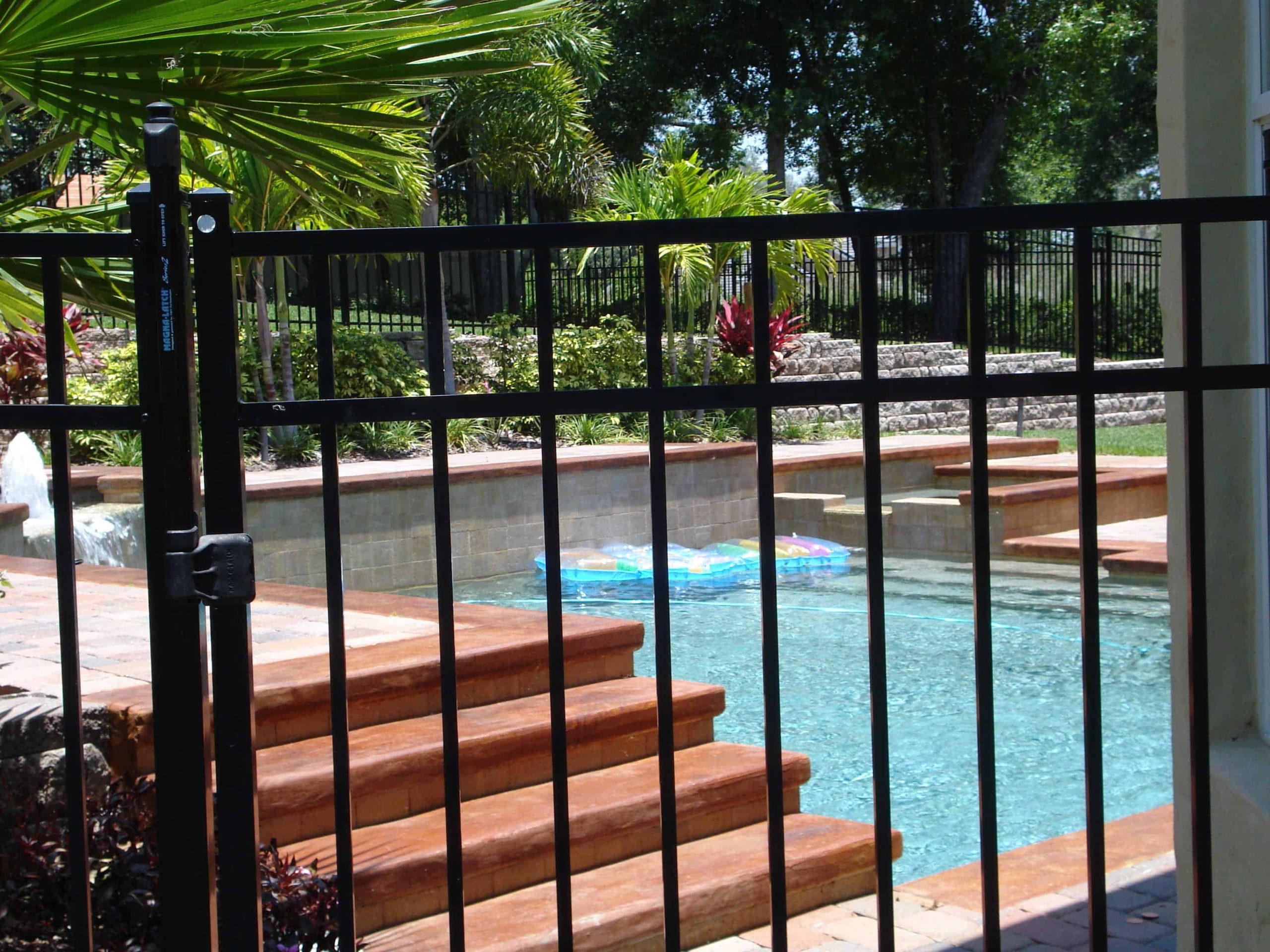

If you have an open pool and are looking to purchase a fence, you may find this article helpful.

In this article, we’re going to go over the requirements to make a fence pool code compliant. There are several types of fence that can be used as a pool barrier but the most common, at least in the Orlando, Florida, is aluminum fencing. The pool code is found is Chapter 41 of the Florida Building Code. There are several requirements but we’re going to highlight the most relevant ones in this blog. Keep in mind that the purpose of the requirements of the pool code is prevent children from getting into the pool from the outside. For that reason, the height requirements that are referred to in the code, which are described below, are measured from the grade of the fence on the outside.
The fence must be at least 48” tall. The drafters of the code had to come up with a height that was tall enough that it would serve as a genuine obstacle to getting in the pool area. This was the height they decided on. This applies to all fence types, including vinyl fence, wood, chain link and aluminum fence.
The horizontal members must be at least 45” apart. The rationale for this requirement was to ensure children could not climb over the fence. In other words, if the fence was 48” tall, but there were horizontal members every few inches, the height of the fence would be irrelevant because the closely spaced horizontal rails would act like rungs on a ladder and would facilitate climbing over the fence. To solve this problem, the drafters ruled that the rails have to be at least 45 inches apart. If they are closer together than that, the fence will fail inspection. (Note: a 48” tall aluminum fence can only have two rails or it will not be code compliant)
 A sphere 4” in diameter cannot pass through the pickets. Aluminum fences come standard with the picket spacing fabricated on 4” centers so this will almost never be a problem for aluminum fencing. For other types of fencing such as vinyl and wood, it may be a problem because the way those fences are constructed are not as standardized.
A sphere 4” in diameter cannot pass through the pickets. Aluminum fences come standard with the picket spacing fabricated on 4” centers so this will almost never be a problem for aluminum fencing. For other types of fencing such as vinyl and wood, it may be a problem because the way those fences are constructed are not as standardized.
There cannot be greater than 2” gap between the bottom of the fence and the ground. The drafters of the code wanted to make sure that children could not gain access to the pool but slipping under a gap in the fence. They decided that two inches was the largest gap that would be allowed. If there is a gap greater than two inches between the bottom of the fence and the ground, anywhere along the fence line, the fence will fail inspection. The practical consideration here is that if the property has any change in grade where the fence is to be located, the fence will have to follow the contour of that grade change to minimize the gap to pass pool code. If the fence is installed straight on the top, there may be a gap larger than two inches between the ground and the bottom of the fence and that can cause the fence to fail inspection.
All gates must be self closing and self latching. This is to prevent the risk of gate inadvertently being left open. The requirement for a gate to be self latching and self closing ensures that the gate will always be closed, regardless of whether someone remembers to close the gate or not.
The latch must be at least 54” from the ground. In keeping with the theme of preventing children from getting access to the pool, the drafters of the code determined that the latch needed to be high enough so that small children could not reach it. They decided that 54 inches up from the ground was the correct number. If the fence is only 48 inches tall, how do you get a gate latch to be 54” from the ground? You use a magna latch, which has an extended magnetic pull on the top, and was made specifically to comply with the pool code.
This article is meant to highlight the more important parts of the pool code as it applies to installing pool fence. In Orlando, where we primarily operate, these have been identified as some of the main parts of the code that we encounter on a daily basis. This is not an exhaustive list of issues that may arise nor should it be substituted for actually reading the code prior to installing a fence around an open pool.
Great Fences Make Great Neighbors!
Your Superior Fence and Rail service team is standing by! Get a fence installation quote today!